Introduction:
Myocardial infarction, commonly known as a heart attack, inflicts irreversible damage to cardiac tissues, often leading to compromised heart function. In the pursuit of innovative treatments, stem cell therapy has emerged as a promising avenue for repairing damaged heart tissue and restoring cardiac health.
Understanding the Challenge:
The aftermath of a myocardial infarction involves the formation of scar tissue in the heart, diminishing its ability to pump blood effectively. Traditional treatments focus on symptom management, but the quest for a solution to regenerate functional heart tissue has fueled the exploration of stem cell therapy.
Types of stem cells utilized:
- Mesenchymal Stem Cells (MSCs):
- Derived from bone marrow or adipose tissue.
- Possess the ability to differentiate into various cell types, including cardiomyocytes.
- Cardiac Progenitor Cells (CPCs):
- They are found in the heart and have a natural inclination to develop into heart-specific cells.
- Targeted for their cardiac regenerative potential.
- Induced Pluripotent Stem Cells (iPSCs):
- Reprogrammed adult cells with induced pluripotency
- Offer versatility and potential for personalized treatment strategies.
Mechanism of Action:
The mechanism of action of stem cell therapy in repairing heart tissue after myocardial infarction involves a complex interplay of various cellular and molecular processes. Here’s an in-depth exploration of the key aspects:
1. Homing and Engraftment:
- Process: Administered stem cells navigate through the bloodstream and home in on the injured heart tissue.
- Significance: This migration ensures the targeted delivery of stem cells to the site of damage.
2. Paracrine Effects:
- Process: Stem cells release a variety of signaling molecules, growth factors, and cytokines into the surrounding microenvironment.
- Significance: These bioactive molecules modulate the behavior of neighboring cells, promoting cell survival, angiogenesis (the formation of new blood vessels), and tissue repair.
3. Differentiation into cardiomyocytes:
- Process: Stem cells possess the ability to differentiate into cardiomyocytes, the specialized cells of the heart muscle.
- Significance: This differentiation contributes directly to the regeneration of functional heart tissue, replacing damaged cells.
4. Immunomodulation:
- Process: Stem cells regulate the immune response by suppressing inflammatory reactions.
- Significance: Reduced inflammation helps create a conducive environment for tissue repair and minimizes the risk of further damage.
5. Anti-Apoptotic Effects:
- Process: Stem cells inhibit programmed cell death (apoptosis) of existing cells in the damaged area.
- Significance: This anti-apoptotic activity helps preserve the integrity of the remaining heart tissue and prevents additional cell loss.
6. Extracellular Matrix Remodeling:
- Process: Stem cells contribute to the restructuring of the extracellular matrix, the framework supporting cells.
- Significance: Proper matrix remodeling is crucial for restoring tissue architecture and function.
7. Neovascularization:
- Process: Stem cells stimulate the formation of new blood vessels (angiogenesis) in the damaged region.
- Significance: Improved blood supply enhances oxygen and nutrient delivery, promoting overall tissue recovery.
8. Modulation of Fibrosis:
- Process: Stem cells help regulate the formation of scar tissue (fibrosis).
- Significance: Controlled fibrosis prevents excessive scarring, ensuring that the regenerated tissue retains normal functionality.
9. Long-Term Effects:
- Process: Stem cells may exhibit sustained effects over an extended period.
- Significance: Prolonged benefits contribute to the durability and stability of therapeutic outcomes.
10. Integration with Host Tissue:
- Process: Stem cells integrate with the existing tissue, fostering a seamless transition between repaired and healthy regions.
- Significance: This integration ensures functional coherence within the overall cardiac structure.
Understanding the intricate details of these mechanisms is essential for refining stem cell therapy protocols, optimizing treatment outcomes, and advancing the field of regenerative medicine for heart repair after myocardial infarction.
Techniques used
1. Cell Isolation:
- Description: Harvesting stem cells from the patient’s own tissues (autologous) or from a donor (allogeneic).
- Significance: It ensures a source of compatible stem cells for transplantation, reducing the risk of immune rejection.
2. In vitro expansion:
- Description: Culturing and expanding the isolated stem cells in a controlled laboratory environment.
- Significance: Increases the cell population to achieve the required therapeutic dose.
3. Cell Characterization:
- Description: Assessing the identity, purity, and viability of the cultured stem cells.
- Significance: Ensures the quality and functionality of the cells before transplantation.
4. Route of Administration:
- Description: determining the method of delivering stem cells to the heart, such as intracoronary infusion or direct injection into the myocardium.
- Significance: Optimizes the delivery route for efficient and targeted cell placement.
5. Biomaterial scaffolds:
- Description: Using biocompatible materials to create a supportive scaffold for stem cell delivery
- Significance: Enhances cell retention, survival, and integration into the cardiac tissue.
6. Imaging Techniques:
- Description: Employing imaging modalities like MRI or ultrasound to guide and monitor stem cell delivery
- Significance: It ensures precise localization of stem cells within the heart and facilitates real-time monitoring of treatment progress.
7. Preconditioning:
- Description: Subjecting stem cells to specific conditions (e.g., hypoxia) before transplantation to enhance their therapeutic properties
- Significance: Augments the cells’ ability to survive and function in the harsh microenvironment of the infarcted heart.
8. Combining with Growth Factors:
- Description: Co-administering stem cells with growth factors to enhance their regenerative effects
- Significance: It amplifies the paracrine signaling and angiogenic potential of stem cells.
9. Gene Modification:
- Description: Introducing genetic modifications to enhance the therapeutic properties of stem cells
- Significance: Allows for the customization of stem cells to express specific factors that promote tissue repair.
10. Immunomodulation Strategies: Description: Employing techniques to modify the immune response to enhance stem cell survival. Significance: Minimizes immune rejection and inflammation, creating a more favorable environment for tissue regeneration.
11. Clinical Trial Design: Description: Implementing well-designed clinical trials with rigorous methodologies Significance: Generates robust scientific evidence regarding the safety and efficacy of stem cell therapy.
The combination of these techniques ensures a comprehensive and targeted approach to harnessing the therapeutic potential of stem cells for heart tissue repair after myocardial infarction. Each technique plays a crucial role in optimizing the success of stem cell therapy in a clinical setting.
Conclusion:
The multifaceted techniques employed in stem cell therapy for repairing heart tissue post-myocardial infarction underscore the comprehensive nature of this regenerative approach. From the initial stages of cell isolation and in vitro expansion to advanced strategies such as gene modification and immunomodulation, each step contributes to the overall success of the therapy. Adding biomaterial scaffolds, imaging methods, and well-thought-out clinical trial protocols makes stem cell delivery and monitoring even more accurate and effective.
As research progresses, ongoing refinements in these techniques promise to overcome existing challenges and pave the way for more robust, personalized, and widely applicable stem cell therapies. The collective efforts to optimize these methodologies not only hold immense potential for the field of cardiovascular medicine but also set the stage for broader applications of stem cell therapy in regenerative medicine. Ultimately, the continued evolution of these techniques aligns with the overarching goal of providing innovative and effective solutions for heart tissue repair, ushering in a new era of regenerative healthcare.



